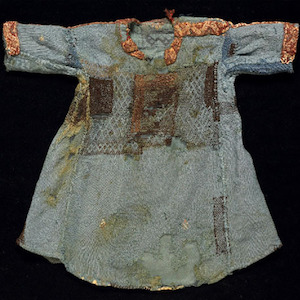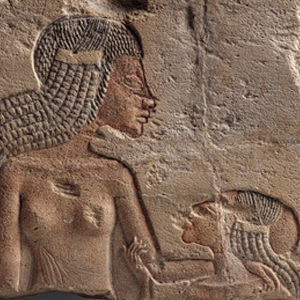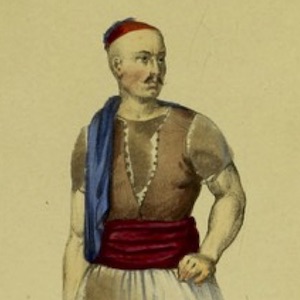Africa

Children's Tunics
These two children's tunics, found in Egypt by archaeologist Wm. Flinders Petrie, date to the Islamic period, 9th or 10th century. The blue tunic measures 45.5 cm long and 51 cm wide (18 x 20 inches).

Mud Crocodile Toy
This small sculpture of a crocodile is made of Nile River mud, and was probably a toy fashioned by a child at play. The crocodile was a familiar monster to children living along the Nile—an object of fear and fascination.

Phoenician Baby Bottle
The Phoenician terracotta vessel features a human face, the nose forming a narrow spout. The bottle is an archaeological find from Carthage, near modern Tunis, dated to 399 BCE-200 BCE. Archaeologists believe this object was a baby bottle.

Two Daughters of Akhenaten
The bas-relief, or carved panel, in limestone shows two sisters embracing. They are princesses from the family of Akhenaten, the 18th pharaonic dynasty in ancient Egypt, dated to 1349–1336 BCE.

Illustration from The Maqamat of al-Hariri
During the Abassid period and onward, children four or older in villages and urban centers began attending schools (maktabs) attached to mosques to obtain a basic education in religious matters.

Devshirme System
This Ottoman miniature painting from 1558 shows a group of boys dressed in red, being registered for the devshirme (usually translated as “child levy” or “blood tax”).

Ayyubid and Ottoman Architecture
In the Islamic world, women were able to own and control their own property at a time when Christian women in Europe were unable to do so. Many wealthy women endowed public buildings as a mark of their piety.

Rock Art, Khoisan
Rock art, found on the walls of caves and on moveable rocks, was once thought to depict simple images of the daily lives of the Khoisan. In the last 20 years, study of oral traditions and close attention to what is actually depicted in the paintings has led to a complete revision of this theory.

Claude Antoine Rozet Paintings
One of the first tasks undertaken by the French military after the 1830 invasion was to visually depict, and thus classify, places, things, and people so as to rule more effectively. This is a pattern seen in all modern colonial regimes worldwide.

Drawing of Khoi Dancers
In the late 17th century, an anonymous artist did a series of impromptu sketches and set pieces showing Khoikhoi at the Cape of Good Hope.